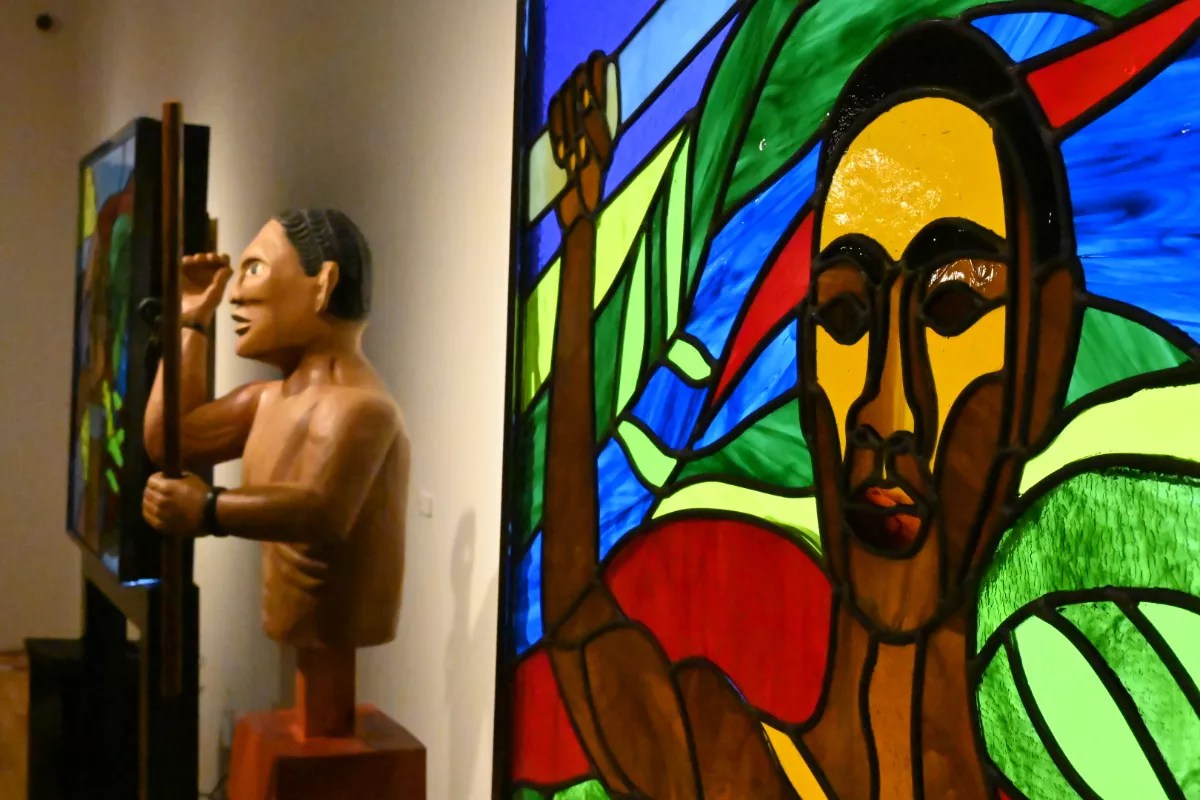
Bennito L. Kelty

Audio By Carbonatix
In the United States, the history of slavery unfolds mostly through stories about the South, but rarely does it look south of the border for similar stories of struggle and freedom. But Museo de las Americas now aims to keep the memory of African slaves who survived and even triumphed in Mexico alive with a new exhibit.
Museo de las Americas often turns to art to showcase the history of Latin America. Its latest exhibit, AfroMexican Journey: Yanga, Slavery, and Freedom, uses art from Mexican descendants of sixteenth and seventeenth century African slaves to tell the story of nearly forgotten legends. The show opened February 20, in the midst of Black History Month, and will end just shy of Juneteenth.
The key figure in the exhibit is Gaspar Yanga, an African prince enslaved in 1575 and taken to Veracruz on Mexico’s eastern coast, arriving several decades after the Spanish conquered the Aztecs. After he evaded his captors, he led a group of escaped slaves who started their own town, San Lorenzo de los Negros; they raided Spanish trade routes to the former Aztec capital, Tenochtitlan, which today is Mexico City. In exchange for ending the raids, Yanga bargained for freedom for himself and his fellow slaves, according to Jorge Baldor, the exhibit’s curator.
“Having been a prince, you have an education level, a confidence level, you have oomph, and he used that to create a community for escaped slaves,” Baldor says. “I’ve talked to a lot of highly educated people in Mexico City who have never heard of Yanga.”
Though he’s not well-known, Yanga has been called the “First Liberator of the Americas.” The exhibit features letters written by Yanga in Old Spanish to Spanish royalty asking to be granted freedom, which marks “the first time the historical documents with Yanga’s story have ever been put on display,” Baldor says.
In 1932, the town of San Lorenzo de los Negros renamed itself Yanga to honor its founder. A few pieces in AfroMexican Journey depict the statue erected in Yanga to honor him. Other works are painted by artists from Yanga, such as Yuye Hernandez, an Afro-Mexican artist who paints with her feet because she was born without arms.
Part of the exhibit looks at the influence of African culture around the world, including religions like Voodoo, Santeria and Islam. It also dedicates space to revealing the history of two other Mexican communities with African roots.
Several walls present the work of artists from Costa Chica, a region of Mexico between the states of Oaxaca and Guerrero on the Pacific coast. Escaped slaves settled in the Costa Chica region during the seventeenth century, when the Spanish brought African slaves across the Atlantic. While Baldor says it’s a closed-off society today, it produced Afro-Mexican artists like Baltazar Castellano Melo and Ivaan Piza, whose work depicting Yanga is on display in the Museo’s exhibit.
Also featured is El Nacimiento de los Negros, a town founded by Black members of the Seminoles, a Native American tribe based mostly in Florida. In the early nineteenth century, they fled the threat of being enslaved in the United States because of their mixed race and settled in Coahuila in northern Mexico in the 1840s. When their descendants, known as Mascogos, found out that slaves had been freed in Texas – just across the border from Coahuila – El Nacimiento de los Negros became the first town in Mexico to celebrate Juneteenth, according to Baldor.
“It’s really hard to find this information,” Baldor says. “This is a lot of new information, information that isn’t taught in schools.” While the exhibit is up, Museo will host lectures by artists whose work is on display, including Hernandez, who will speak on April 25, and Piza, who paints colorful artwork with sand on palm leaves, on May 16.
Mexicans take pride in their country, especially now that immigration is the focal point of politics in the United States. The Mexican diaspora in the U.S., including Chicanos in Colorado, know the history of slavery, and the story of Aztecs and the Spanish. But here’s a chance to learn about parts of Mexico that are rarely celebrated.
AfroMexican Journey runs through June 13 at Museo de las Americas, 861 Santa Fe Drive; find tickets and more information here.